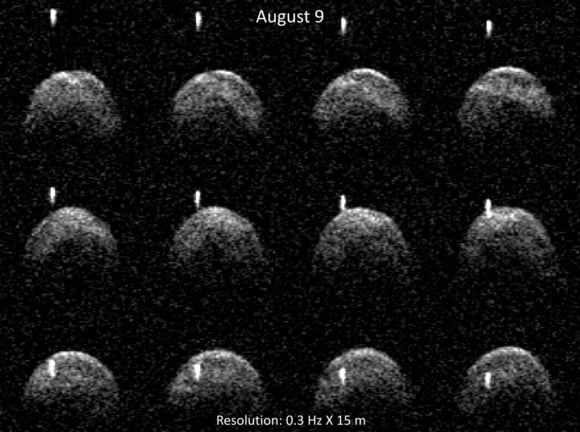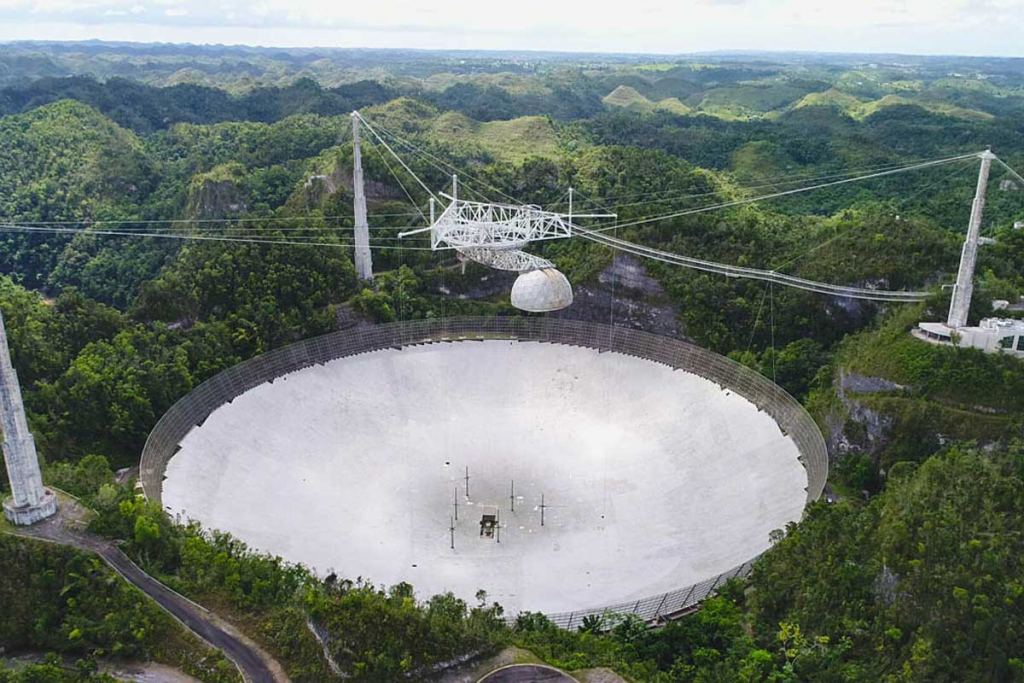Space is big, really big! Finding new asteroids which are usually dark against the inky blackness of space is harder than looking for a needle in a cosmic haystack. Back in 1991 an astronomer discovered a kilometre wide asteroid which was subsequently found to have a smaller moon half its size. It was given the snappy name of 1991 VH which , after follow up observations was revealed to have a tumbling, chaotic rotation. This was the first binary asteroid that has been seen to exhibit this behaviour. A paper just published suggests that a close encounter with Earth as recently as 12,000 years ago could have started its tumbling motion.
Asteroid 1991 VH was discovered by Robert McNaught at the Siding Spring Observatory. The asteroid was subject to high resolution imaging from Goldstone and the Arecibo Observatory in 2008 and showed a roughly spherical object. There is an equatorial ridge which gives the whole thing the appearance of a classical spinning top. It's shape is not what makes the system unique, instead it is the chaotic tumbling nature of the binary system.
The satellite of 1991 VH has been dubbed S/2008 (35107) 1 and it was discovered on 27 February 1997 by a team of astronomers at Ondrejov Observatory. It was detected through photometric observations of the system's dip in brightness caused by the eclipses and occultations as the two components rotate about each other.
The binary asteroid pair have captured attention of astronomers because it comes from a class of asteroids known as Near Earth Binary Asteroids. Usually they consist of an oblate primary asteroid that is rotating rapidly and around it is a tidally locked elongated secondary asteroid. The tidal locking of the system is the result of tidal forces just like those that have tidally locked the Moon to Earth.
In a paper published by Alex J Meyer from the University of Colorado Boulder and the team of researchers discuss that a past close encounter with Earth could have provided the necessary gravitational influence to disturb the binary system. It has been known that near-Earth asteroids develop chaotic orbital; properties at some point in their life. This is due to orbital resonances with some of the outermost gas giants and on occasions close passages by terrestrial planets.
The team theorise that a single close passage by Earth could have been enough to impose a chaotic nature to the asteroids orbit. To facilitate their research, the team undertake a series of Monte-Carlo simulations where a stable binary asteroid is perturbed by a series of different orbital geometries. The resultant orbital parameters from the simulations are then compared with real observations from 1991 VH.
Their results showed that a close fly-by of Earth by 1991 VH could most definitely alter the state. They propose that the flyby would have occurred within the last 100,000 years, possibly as close as within the last 12,000 years. The new altered chaotic state could remain until current day unless further encounters counteract the perturbations.
Source : An Earth Encounter As the Cause of Chaotic Dynamics in Binary Asteroid (35107) 1991VH
 Universe Today
Universe Today

